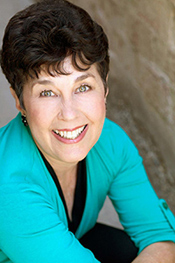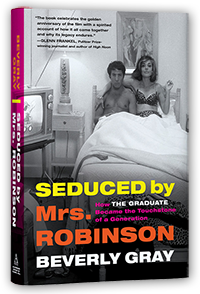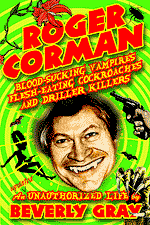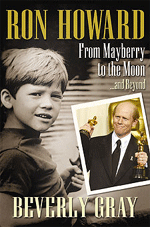So we’ve lost Ray Harryhausen. The news probably came as a
surprise to those of us who figured he was no longer alive. At 92, Harryhausen
was something of a dinosaur, which was apt because it was on-screen dinosaurs
that first inspired him to take a lifelong interest in filming exotic and
impossible creatures. As a boy in Los Angeles, he was hooked by a 1925 silent fantasy "The Lost
World," in whichWillis O'Brien used stop-motion to show a dinosaur
tumbling off a South American cliff. Then came King Kong, which mesmerized him when he saw it in 1933 at
Graumann’s Chinese Theater. O’Brien’s work on that film so impressed the
thirteen-year-old Harryhausen that he borrowed a 16 mm camera, cut up his mother's fur coat to
make a bear model, and shot a film about bear menacing himself and his
dog. (Fortunately the fur coat was old, and his mother may have figured that
wearing furs in L.A. weather was pretty pointless.)
During World War II, Harryhausen served in Frank Capra’s
film unit. Afterwards he was lucky enough to be hired by his idol, Willis
O’Brien, to help create the giant ape in the Oscar-winning Mighty Joe Young. This was the King Kong-like story of a gorilla’s
life in captivity, which I saw multiple times on TV as a child. You might say that
a fascination with jungle animals was in his blood: I’m told he was the great-grandson of African
explorer David Livingstone (as in “Doctor Livingstone, I presume.”) But
he was also a child of Los Angeles, and found inspiration not just at the
movies but also at the Los Angeles County Museum (now the Museum of Natural
History) where murals depicting the nearby La Brea Tar Pits and the sites of
other primeval scenes caught his eye. His official website informs me that at
age eighteen he entered a County Museum competition, presenting an elaborate
prehistoric diorama that won first prize.
Harryhausen naturally gravitated toward two other Angelenos
who loved imagining non-existent worlds: author Ray Bradbury and the inimitable
Forrest J. Ackerman, publisher of Famous
Monsters of Filmland. The three became lifelong friends. And he had a
powerful impact on filmmakers who came after him. Harryhausen’s movie fantasy
work (perhaps best typified by his dueling skeletons in 1963’s Jason and the Argonauts) has influenced everyone from George
Lucas (Star Wars) to the wonderful
British animator Nick Park, of Wallace
and Gromit fame.
When I worked for Roger Corman, I don’t honestly remember Harryhausen’s
name coming up, although Corman’s companies did spawn such effects specialists
as Dennis and Robert Skotak, who both later won Oscars for their work on James
Cameron extravaganzas. Corman’s own early
special effects – always done on the cheap – could be as cheesy as building a creature
out of papier mâché and making it “move” with piano wires, or by having an
actor crawl inside. (A famous Corman principle, learned while shooting It Conquered the World with Beverly
Garland, was “Always make the monster bigger than your leading lady.”) Forry
Ackerman once told me that back in 1955 Roger had phoned him while producing The Beast with a Million Eyes. Naturally, he needed a monster. When Ackerman suggested Ray Harryhausen,
Roger exclaimed, “Omigod, no, I couldn’t afford him. He charges $1000 a
tentacle.” So Ackerman contacted newcomer Paul Blaisdell, who with his wife
spent a month creating an elaborate hand puppet. Roger forked over $50 bucks
and the cost of materials, and the critter looked . . . well, as though it had cost at least twice
that much.









I am of course a HUGE fan of Ray Harryhausen's work. I did know he was still around - he had lost his good friend Ray Bradbury last fall, but he was still kicking - working on DVD special features for his amazing movies in the last few years. I was saddened by his death, although it cannot be said that his time was cut short at 92. I think the first of his movies I saw was The Beast from 20,000 Fathoms, or possibly Mighty Joe Young (where he did the bulk of the stop motion animation under the guidance of Willis O'Brien - my "O" post in the A-Z). I know that stop motion was the first special effect I read up on and understood. (I still have problems understanding exactly how optical printers work, though I guess those worthy machines have been relegated to the trash heap by the almighty computer and its digital effects.) I am sad Ray Harryhausen is gone - but I hope he and Mr. Bradbury are having a rousing game of heavenly checkers. RIP.
ReplyDeleteOh, and those visuals provided by the pennies squeezed out by Roger Corman - so low budget they should have been called "ordinary effects." I keed! I keed! Paul Blaisdell and the others who supplied monsters and visual effects for Roger Corman's early movies were like MacGyver - pulling off some charming stuff with a roll of tape and some cardboard and glue.
"Always make the monster bigger than your leading lady."
Perfect.
Thanks for the memories, Mr. C. I looked up Paul Blaisdell's IMDB credits, and he did nothing beyond 1959. Where is he now?
ReplyDelete